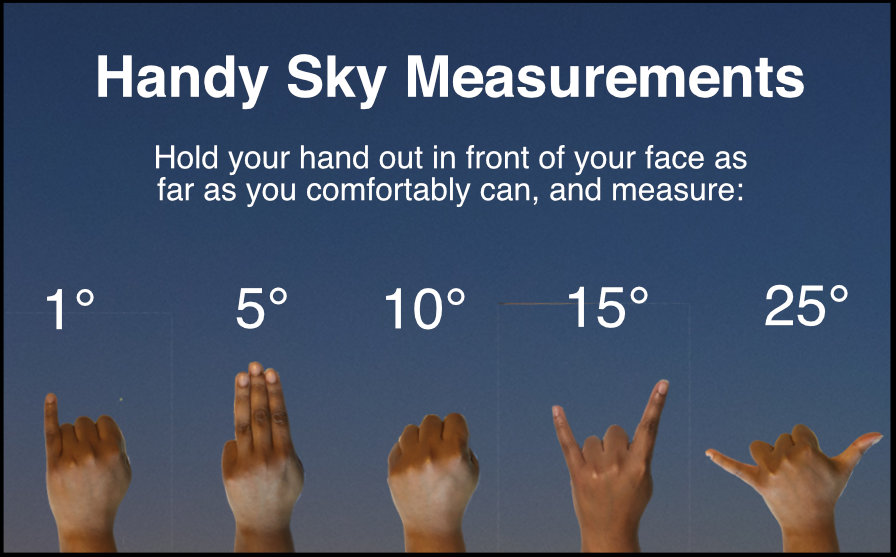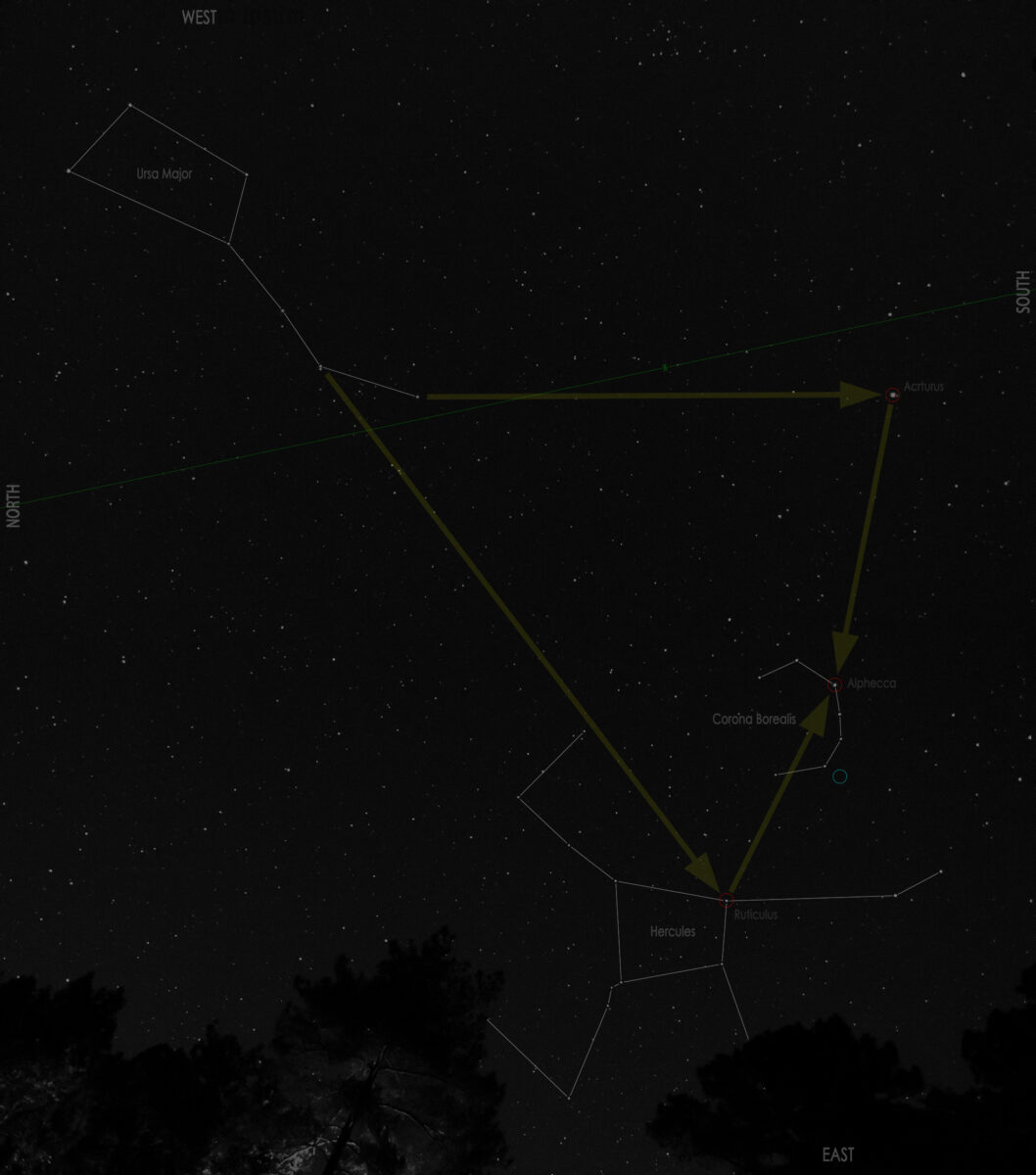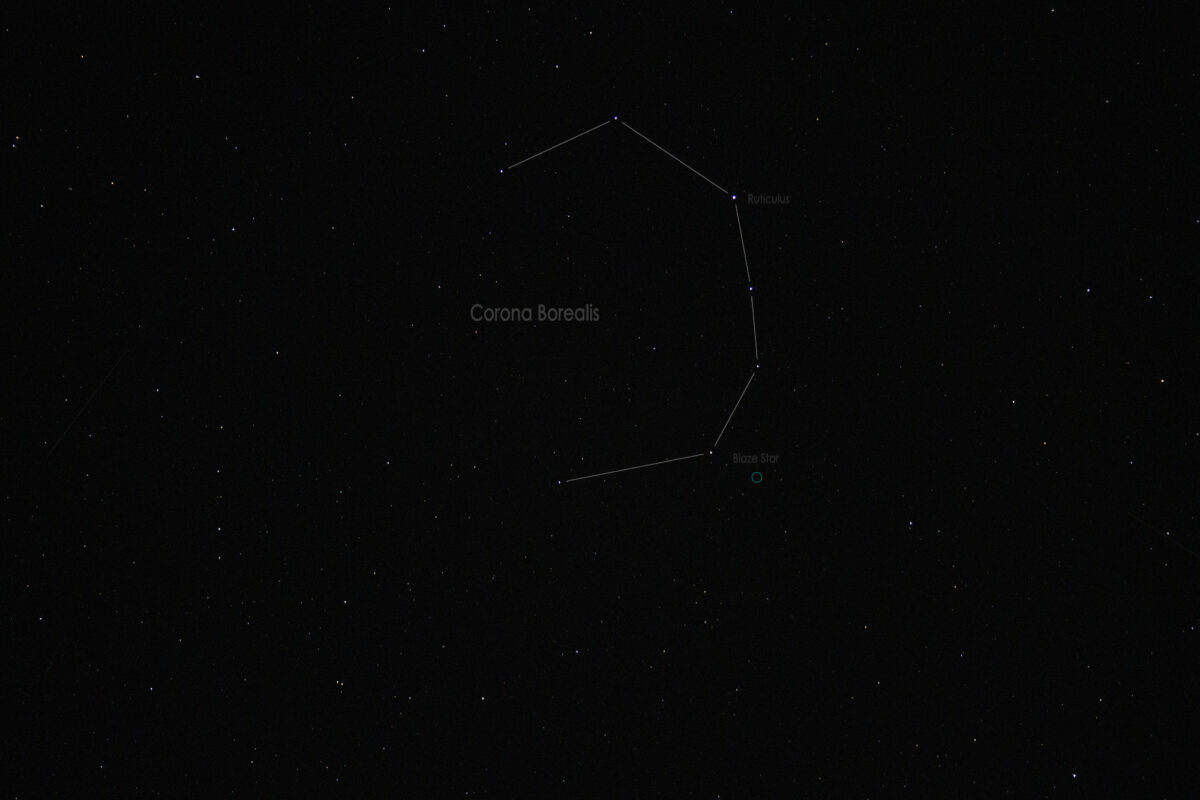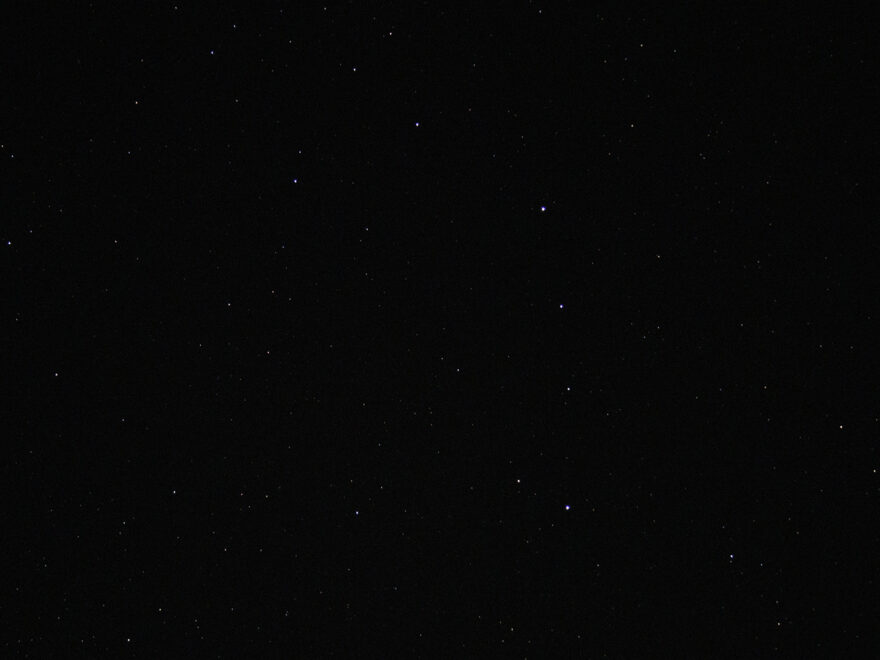Sometime over the next 3-4 months a new star is expected to appear, a recurrent nova unofficially known as the Blaze Star. This nova has been occuring on average every 80 years. Astronomers are hopeful it will happen again this summer.
T Coronae Borealis
The binary star system that produces this nova is officialy called T Coronae Borealis, or T CrB. It is located in the constellation Corona Borealis which is also known as the Northern Crown. It consists of a red giant star and a white dwarf. The white dwarf slowly accumulates material from the red giant until it reaches a critical mass, at which point a thermonuclear explosion occurs. During previous nova the visual brightness of T CrB increased from its average magnitude of 10 (barely visible in binoculars) to magnitude 2 or 3 (naked eye visibility). Unlike a supernova in which the star completely explodes, this recurrent nova should see the white dwarf survive to start the process over.
This nova may have been observed as far back as the year 1217. The most recent nova occured on May 12, 1866 and February 9, 1946. So why do astronomers think it will happen this time after just 78 years? Because T CrB is behaving like it did in 1946. Back then it slowly increased in brightness until a year before the nova when it suddenly dimmed. A similar dimming occured last year in March and April.
Finding the Blaze Star
The time to start looking is now before the nova occurs, that way you can easily recognize the difference in the star field. Luckily it is fairly easy to locate. Most people are familiar with the constellation Ursa Major, also known as the Big Dipper. We are going to use it to find the location of the Blaze Star.


Begin by using the Big Dipper handle to find the bright, red giant star Arcturus (“follow the arc to Arcturus”). The distance between Alkaid (the end star of the Big Dippper handle) and Arcturus is 30°.
Next use the middle stars in the Big Dipper handle to find the star Ruticulus, the southwestern star in the keystone that forms the central portion of the constellation Hercules. The distance between Mizar (the middle star in the Big Dipper handle) and Ruticulus is 41°
Roughly halfway between Arcturus and Ruticulus is the star Alphecca, the brightest of the stars that form the constellation Corona Borealis. Alphecca is 15° from Ruticulus and 19° from Arcturus. The Blaze Star will be near the third star east of Alphecca, indicated by the blue circle.

Here is a closer look at Corona Borealis. The number of stars is roughly what you can expect to see with a pair of binoculars.
The untagged image at the top of the blog is a simulation of what is expected. Can you spot the nova? If so you should have no problem seeing it when it actually happens. You will need to be quick though, the nova is only expected to last for a few days.

